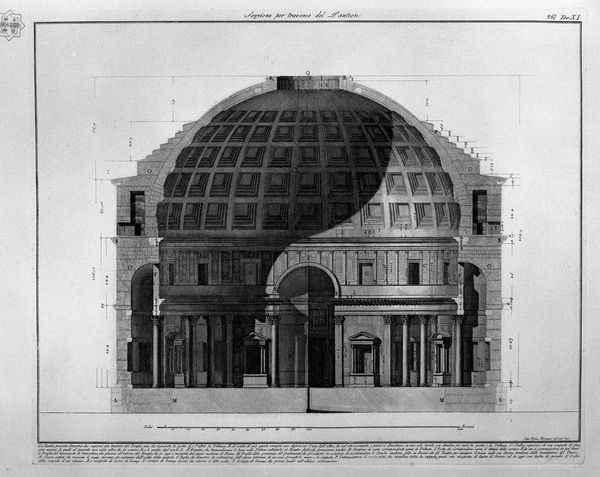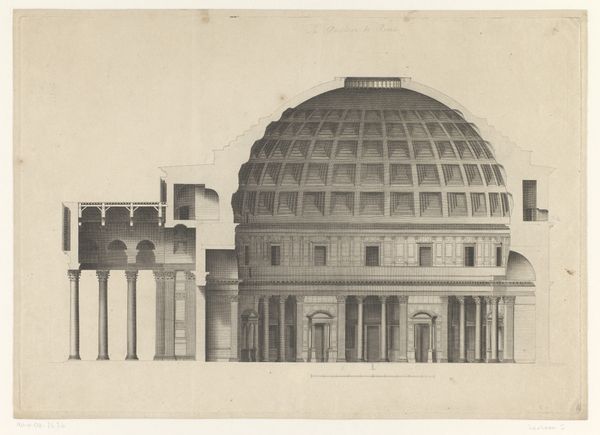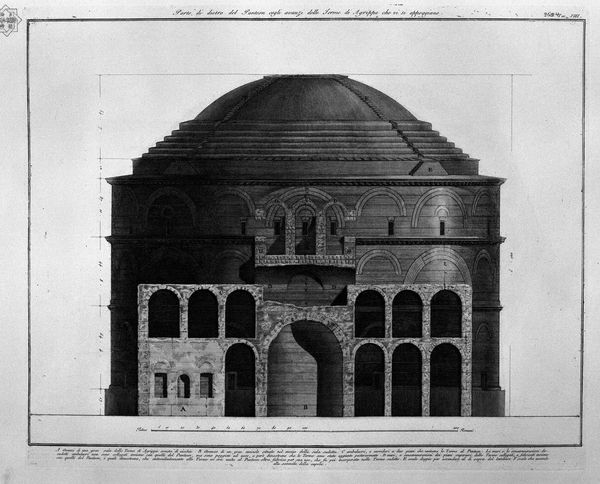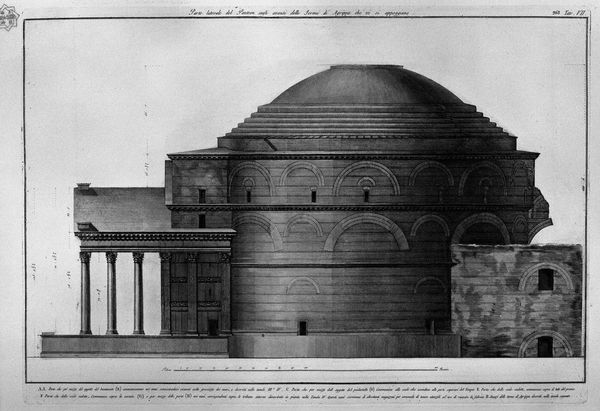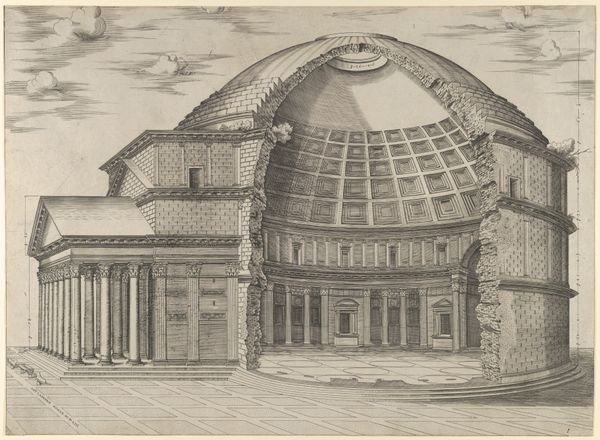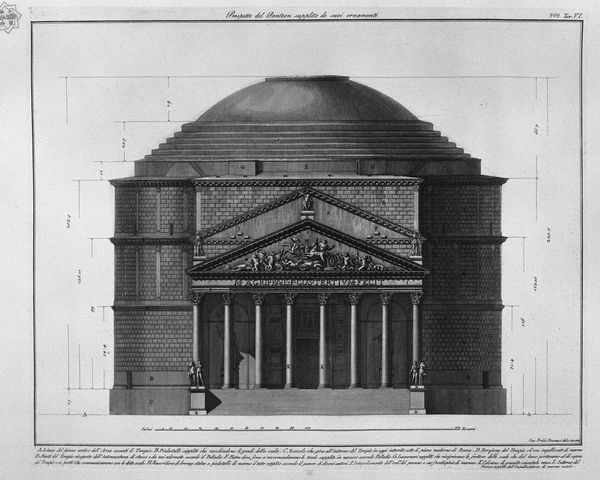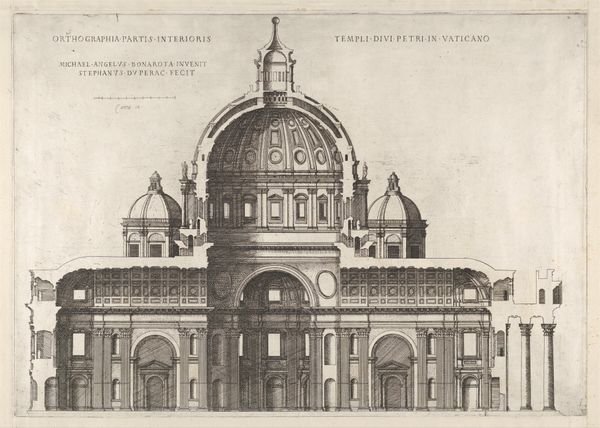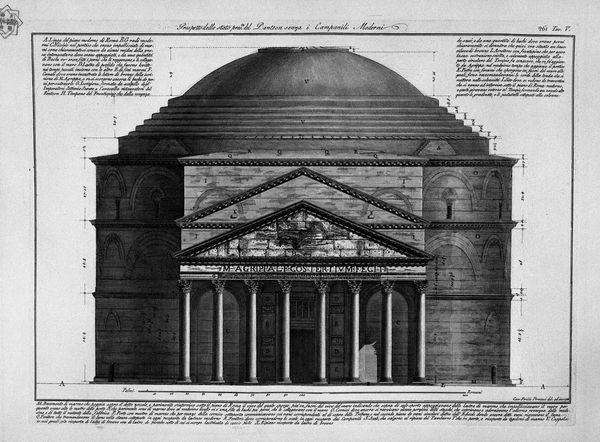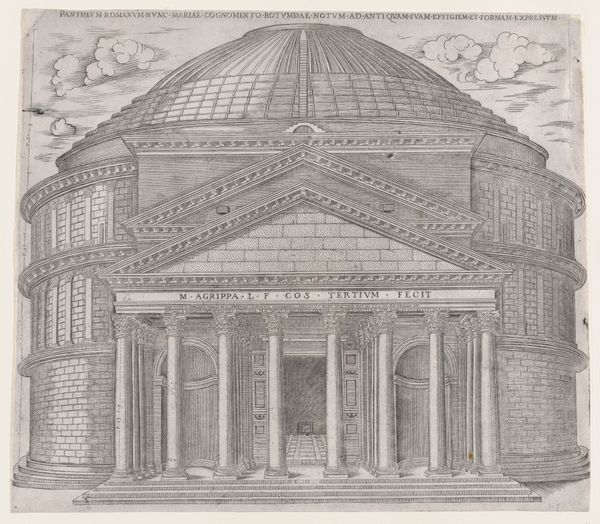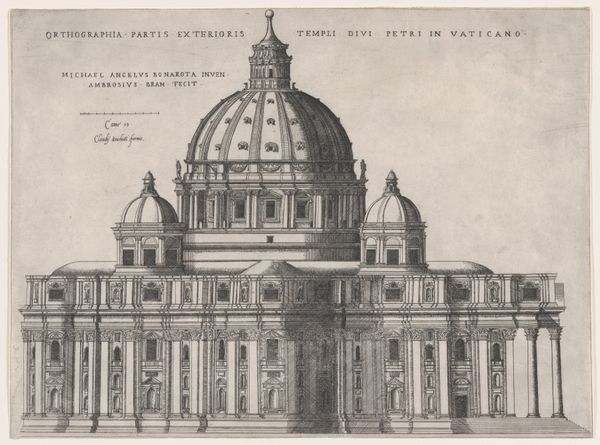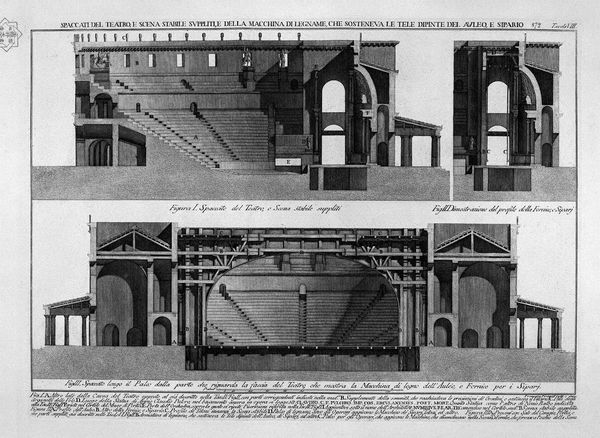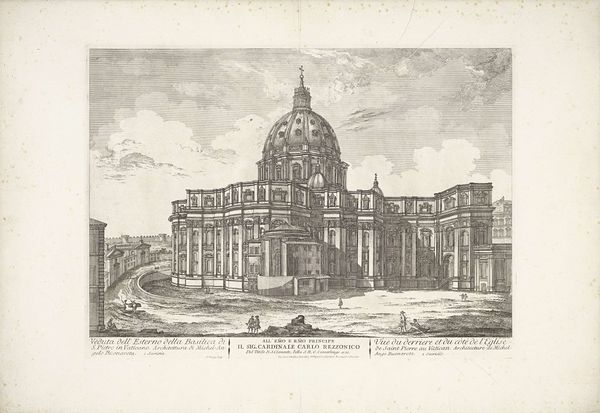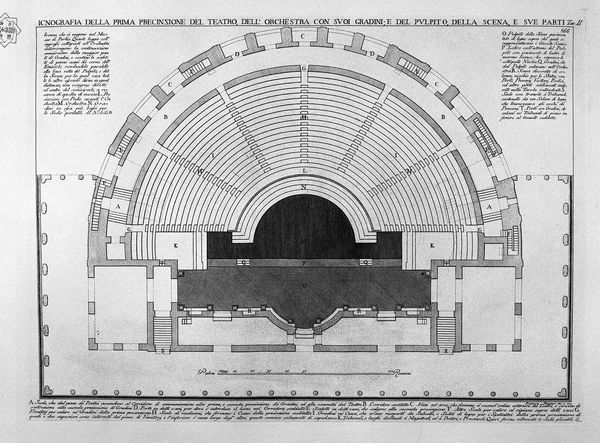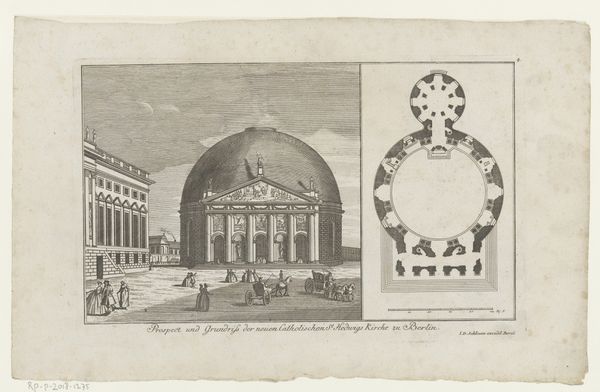
Section along the Pantheon, which shows the pronaos or portico and the interior of the Temple
0:00
0:00
drawing, print, etching, engraving, architecture
#
drawing
#
neoclacissism
# print
#
etching
#
sculpture
#
perspective
#
charcoal drawing
#
historic architecture
#
cityscape
#
history-painting
#
engraving
#
architecture
Copyright: Public domain
Here we see Giovanni Battista Piranesi's etching of the Pantheon, revealing the building’s structure and symbolic power. The dome, a dominant visual symbol, is reminiscent of the heavens, reflecting ancient beliefs that saw the cosmos as a divine sphere. This motif echoes in various cultures—from the yurts of Central Asia to the stupas of India—each employing the dome to symbolize the sky's embrace. Now, consider the oculus at the dome's apex. It's a void and an eye, open to the divine. This architectural element is not merely functional; it is deeply psychological. It speaks to our collective unconscious, evoking our innate desire for connection with the sublime, where light enters as divine knowledge. The dome, through its enduring presence in architecture across time and space, transcends mere structure. It represents our persistent yearning to bridge the earthly and the celestial, a symbol continually reinvented, yet eternally resonant.
Comments
No comments
Be the first to comment and join the conversation on the ultimate creative platform.
